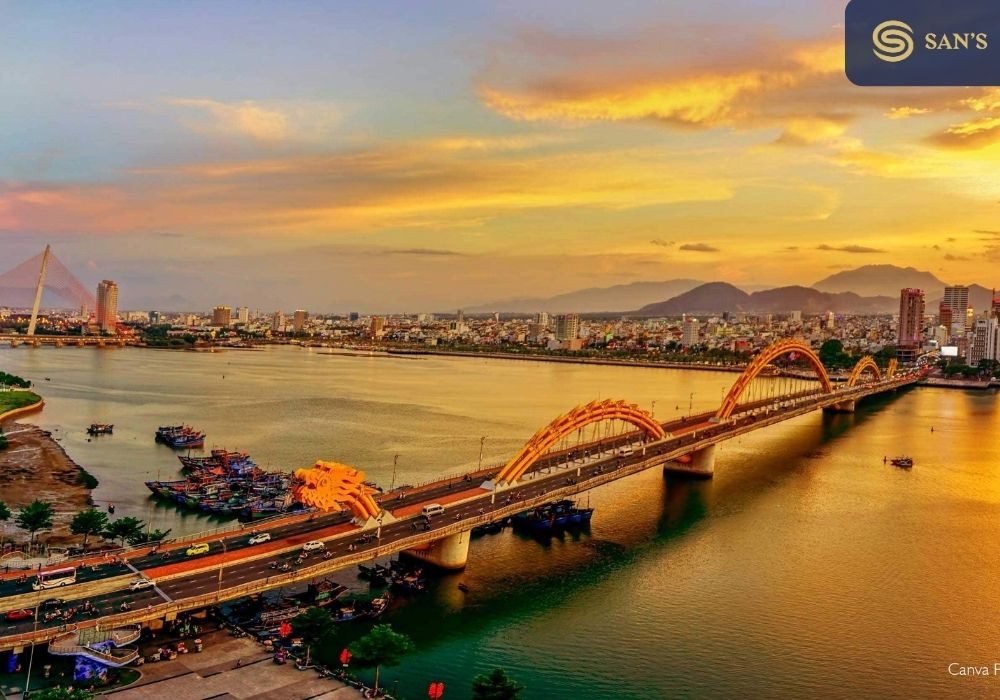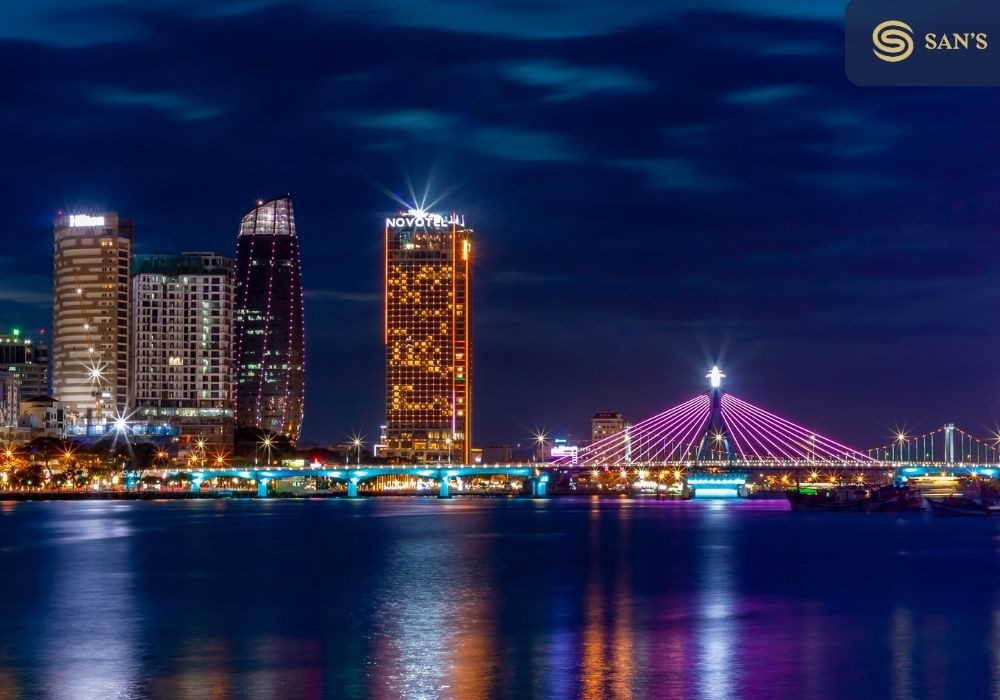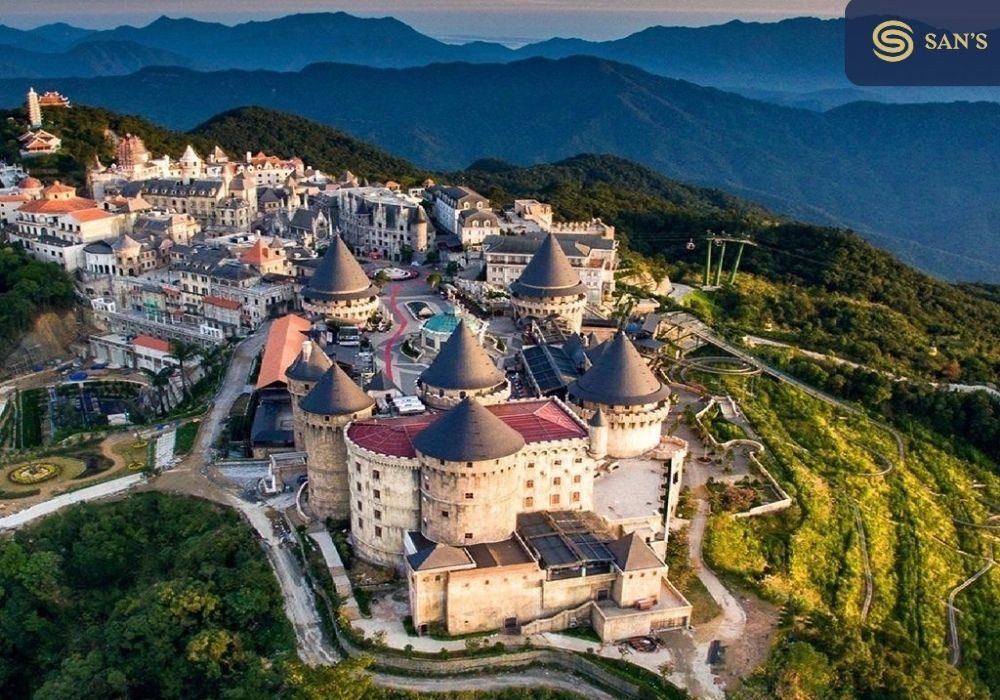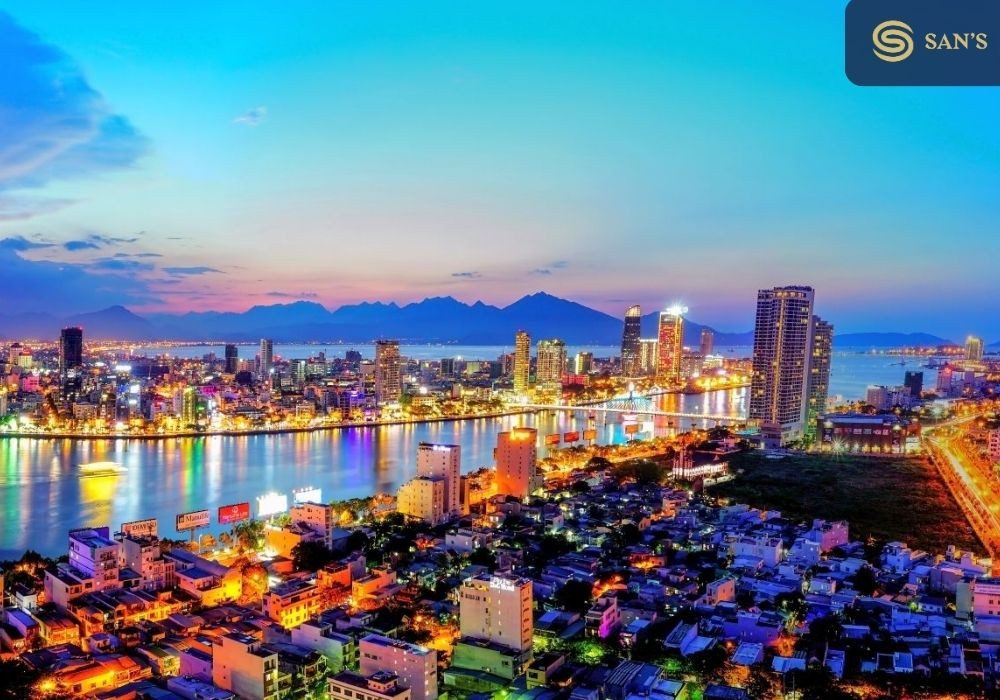Da Nang or Danang is a class-1 municipality and the fifth-largest city in Vietnam by municipal population. It lies on the coast of the East Sea of Vietnam at the mouth of the Hàn River, and is one of Vietnam’s most important port cities. As one of the country’s five direct-controlled municipalities, it falls under the administration of the central government.

Da Nang is the commercial and educational centre of Central Vietnam and is the largest city in the region. It has a well-sheltered, easily accessible port, and its location on National Route 1 and the North–South Railway makes it a transport hub. It is within 100 km (62 mi) of several UNESCO World Heritage Sites, including the Imperial City of Huế, the Old Town of Hội An, and the Mỹ Sơn ruins. The city was known as Cửa Hàn during early Đại Việt settlement, and as Tourane (or Turon) during French colonial rule. Before 1997, the city was part of Quang Nam.
Da Nang is a vibrant coastal city located in central Vietnam. Here’s a comprehensive overview of Da Nang:
Location and Geography: Da Nang is situated on the eastern coast of Vietnam, overlooking the South China Sea. It serves as a central hub for the region, located between the popular tourist destinations of Hanoi and Ho Chi Minh City.

Beaches: Da Nang is renowned for its pristine beaches, which stretch for approximately 30 kilometers (18.6 miles) along its coastline. Some of the most popular beaches include My Khe Beach, Non Nuoc Beach, and Bac My An Beach. The beaches offer golden sands, clear waters, and a range of water sports activities.
Marble Mountains: One of the iconic landmarks of Da Nang is the Marble Mountains, a cluster of five limestone and marble hills. Each mountain is named after one of the five elements: Thuy (Water), Moc (Wood), Hoa (Fire), Kim (Metal), and Tho (Earth). Visitors can explore caves, climb to the mountaintops for panoramic views, and discover Buddhist pagodas within the mountains.
Dragon Bridge: Da Nang is famous for its stunning bridges, and the Dragon Bridge is a standout attraction. This bridge is shaped like a dragon and stretches across the Han River. It is particularly impressive at night when it is illuminated, and on weekends, it breathes fire and spouts water.
Ba Na Hills: Located just outside Da Nang, Ba Na Hills is a mountain resort that offers a range of attractions. The Golden Bridge, with its unique design and breathtaking views, has become an Instagram sensation. Visitors can also enjoy amusement park rides, visit the Linh Ung Pagoda, and explore French-inspired architecture.

Hoi An: Although not part of Da Nang, Hoi An is a UNESCO World Heritage site located just a short distance away. It is easily accessible from Da Nang and is known for its well-preserved Ancient Town, lantern-lit streets, and traditional architecture. Hoi An is famous for its tailors, where you can have custom-made clothing, and its vibrant night market.
Food: Da Nang is a haven for food lovers, offering a wide variety of Vietnamese cuisine. The city is particularly known for its seafood, which is fresh and abundant due to its coastal location. Must-try dishes include mi Quang (a local noodle dish), banh xeo (Vietnamese savory pancake), and bun cha ca (fishcake noodle soup).

Cham Museum: Da Nang is home to the Cham Museum, which houses an impressive collection of artifacts from the ancient Champa Kingdom. The museum showcases sculptures, statues, and other Cham artwork, providing insights into the rich cultural heritage of the region.
Da Nang is a dynamic city that combines natural beauty, cultural attractions, and modern developments. Its stunning beaches, captivating landmarks, and proximity to other notable destinations make it a popular choice for travelers seeking a diverse and memorable experience in Vietnam.
>>>See more: Da Lat